Supporting armored monsters. CH 2. Is success possible?
We emphasize the fact that the cavalry was mainly used just in the equestrian ranks. For example, Colonel V. Oberyukhtin, a researcher at the operation at Cambray, describing an episode of the battle of 20 on November 1917, wrote: “The English cavalry corps belatedly started advancing for the infantry, heading for 5 and 2. divisions from Guzokur forest Lato, Manier, Cambrai, and 1-th kav. division - on Marquain and further north to assist the infantry in mastering Kanten, Fontaine-Notre-Dame and Burlon. Having safely passed through the aisles arranged in the barricades of the German trenches captured by tanks - raiders and sappers, the cavalry only in 14 h. 30 m. Moved on both sides of the road from Le Pave and the forest of Lato to Manier and Marcoin. Here it was discovered by German artillery observers from the southern outskirts of Ryumilya and was fired by artillery from the area north-east of Ryumilya. This circumstance further delayed the advancement of the English cavalry, hiding in the folds of the terrain.
In 16 h. 30. Canadian Brigade 5-kav head squadron. the division quietly crossed the temporary bridge over the canal p. Scheldt east of Manier and appeared on the heights northeast of this point. Here he rushed boldly into the attack on two 2-th and 3-th battalions of 213-th lightweight art. the regiment, which he observed in positions north-east of Rumilla, and captured them.
The squadron galloped on, to Cambrai. But at that time, the reservists of the 54 th recruiting field depot of the German infantry appeared on the battlefield. divisions coming from Cambrai to take up the position of Rumilla, Krevker. The fire they opened made the Canadians move away ...
Similar operations were carried out and parts of 1-th Kav. divisions. Its advanced units to 16 h. 30 M. reached Noyel. Several head squadrons of this division jumped out of the bushes north of Noyel, and with a broad front moved on to Fontaine-Notre Dame, to break through. At this time, parts of the 2-th battalion of the 232-German rezels hurried from Cambrai to Canten. shelf. At the sight of the English cavalry in the column, panic began. Indiscriminate fire was opened, as a result of which the commander of the 232 who was traveling with the staff res. the regiment was badly wounded, the regimental adjutant was killed. Part of the headquarters with the regimental commander was captured. However, the German machine guns, which had taken the position, were stopped by the attack of the English cavalry, and then it was pushed aside from the forest of La Foley that it had seized to the south by the 3 battalion of the 52 section, which had come from Cambrai. shelf. There was no connection between the units of this battalion and the 2 battalion of the same regiment, which had been dug in to the south of Kantin, for a long time, and the breakthrough remained unfilled.
However, no further cavalry attacks followed ...
Thus, the initial actions of the head units of the English cavalry, especially in Ryumilya, were successful. They caused a panic in the nearby German rear, which had come to Cambrai. But these successes of the advanced units were not supported and developed ...
Proper intelligence was not organized. The situation that required immediate advancement, despite the loss, was not properly assessed and used by the command of the cavalry corps. The British infantry and artillery command also failed to ensure the advance of the cavalry from the fire of several German batteries at Ryumilya. In addition, there was no unifying active leadership of the battle on the part of the army command, which was able and should have restored the interaction of various branches of troops and formations in the dynamics of the battle, as well as to use a favorable moment to develop success ”[Oberyukhtin V. Operation under Cambrai in 1917, M., 1936. C. 123-125.].
Were the roots of the inability to operationalize cavalry in the absence of serious experience from the British cavalry command? What did Colonel A. Chavchavadze write about? This was supposed to be a signal in the run-up to the responsible Amiens operation.
V. Oberyukhtin pointed out the "obsolescence of the organization" of the cavalry corps and the inability of the command to use the compound for fruitful combat work [Oberyukhtin V. Decree. Cit. C. 170.]. A. Chavchavadze also spoke about this, who considered that the commander was rather an inspector of cavalry than a full-fledged commander [Brief information about the English cavalry. Comp. 13 Uhlansky Vladimir Regiment Colonel Prince A. Chavchavadze. B. m. 1916. C. 8].
V. Oberyukhtin, describing the brilliant tactical breakthrough of the British from Cambrai, noted that the initial success was not developed, although there were all the prerequisites for turning it into a broad operational breakthrough. It was not possible to develop a tactical breakthrough and convert it into operational cavalry, because “... its appropriate entry into the breakthrough was not prepared and organized. The interaction of cavalry with artillery, with tanks and infantry was clearly weak. Certain successful cases of joint actions of cavalry with other branches of the military should be attributed to the initiative of the commanders of small units and subunits. The British army did not have the skills to carry out the interaction, and the management was distinguished by its unsystematic, passive and low operational reduction of the English headquarters, especially in the dynamics of the hostilities. The organization of the cavalry itself did not meet the requirements of independent work on the battlefield ... the cavalry, which appeared on the battlefield, was not provided with a fire shaft or smoke screens that would assist it during the passage of the breakthrough gate. Apparently, the preparation of her cavalry responded to the conditions of her actions during the breakthrough. In any case, its command was not able to lead the horse masses, the British cavalry in their small units worked perfectly "[Oberyukhtin V. Decree. Cit. C. 156.].
So, the conclusions of V. Oberyukhtin and A. Chavchavadze about the inability of the highest British command to use their cavalry and, at the same time, about the excellent actions of the cavalry at the tactical level coincide.
Nevertheless, special hopes were pinned on the cavalry in the Amiens operation. Indeed, is it not logical when the old mobile branch of arms (cavalry) will support the nascent new (tanks)? Especially since serious masses (96 machines) of speed (of course, for a given time; speed was 12 km per hour) Mk A Whippet tanks - just meant for joint operations with cavalry.
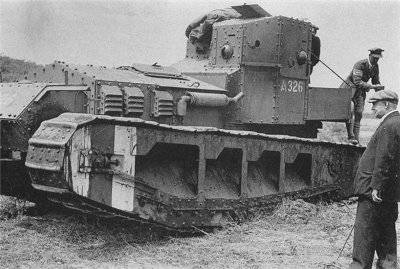
13., 14. Mk a whippet
We will dedicate the Amiens operation to one of the promising articles, and in this we will focus on the reconstruction of the actions of mobile forces - tanks with the support of cavalry.
How was the operational and strategic situation on the eve of the operation?
As a result of the Big Offensive of the Germans, which began on 21 in March of 1918, in the direction of Amiens and Mondidier, the British were thrown back to Amiens.
On April 24, the Germans captured Willer-Breton, which, after a brilliant counterattack, was repulsed that day, and the front stabilized on the line: Albert, Willer-Breton, Mondeidier.
Marshal F. Foch, in the directives of April 3 and May 20, dwelt on the idea of offensive actions - suggesting that the British-French joint action should free the Paris-Amiens railroad.
15. F. Foch.
Performing the installation of the command of the combined forces of the Entente, Field Marshal D. Haig, commander-in-chief of the British Expeditionary Force in France, ordered General H. Rawlinson, commander of the British 4 army, to prepare this operation - the army of the latter was to attack in conjunction with the French 1 army.
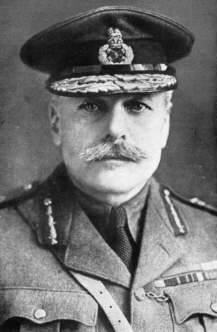
16. D. Haig.
On July 24, a meeting of the commanders-in-chief of the Allied armies was held, at the end of which F. Foch formulated the following instruction (Directive No. 2395 of July 25): “The fifth German offensive failed and turned into defeat as a result of the 10 and 11 armies. It is necessary to develop this success further in depth with a series of consecutive attacks with great energy. ”
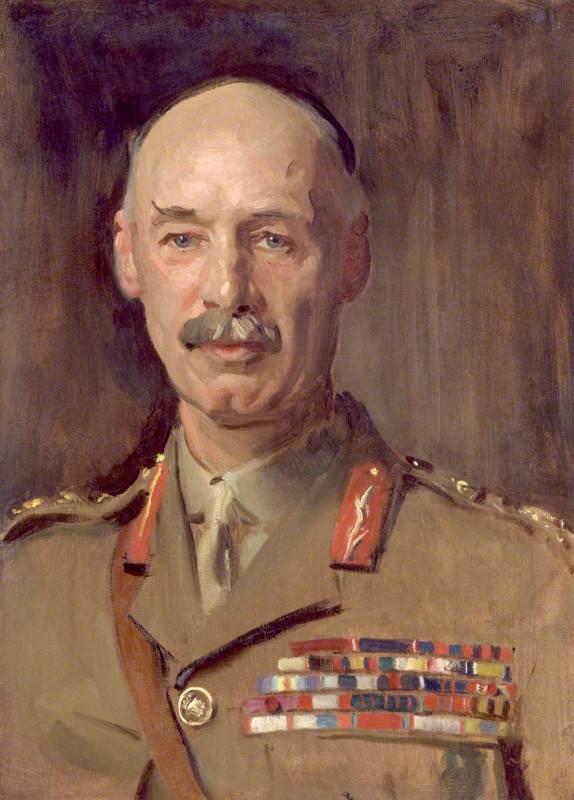
17. Mr. Rawlinson.
The aim of the operation was: “To free up the railway, reaching the front: Maricourt-on-Somme-Arboniere-Cé-les-Césnel-Hangesten-Santerre and as soon as possible reach the Sholnes-Roye line, energetically rejecting the enemy in the main direction to Gum, between but as the French attack Mondidier from one side and the other, they will move in the direction of Roya. ”
Forces: British 4-I Army, reinforced by the Canadian Corps, Cavalry Corps and Tank Corps, French 1-I Army, reinforced by 4 divisions and 2 light tank battalions. The Franco-British offensive was being prepared in an atmosphere of increased secrecy.
The area of the offensive area was a plain between pp. Ankrom and Avrom. The plain was crossed by a wide peat valley. Somme (especially winding east of Amiens) and the valley. Fox North of the Somme, the terrain was more difficult and rugged by ravines. To the south, between the Somme and Avrom, the plains of Santerra, slightly undulating and open, dotted with settlements, small forests and groves, were suitable for tank and cavalry operations. But in the area south of the river. The fox represented a serious obstacle. Behind the lines of the German positions were the external defensive lines of Amiens, previously lost by the Allies. Further east, and especially in the Somme region, the area devastated by the battles of 1917 was dug up - and of little use for the actions of cavalry and tanks.
The front of the troops of the British 4 Army was occupied by 6 divisions of the German 2 Army General cavalry G. von der Marwitz. The English General Staff believed that even the 8 divisions located nearby could strengthen them.
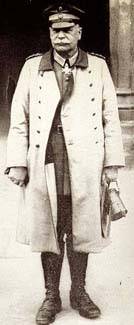
18. G. von der Marwitz.
The 2 Army of the infantry general O. von Gutier was the neighbor of the 18 Army on the left. Inter-army junction was located directly in front of the front of the French 1-th army. Most of the German divisions had been in positions for more than a month - they were thoroughly weakened by the recent battles. In general, the result of the defeat of July 18 influenced the spirit of the German army.
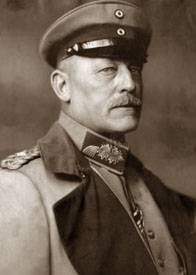
19. O. von Gutier.
In late July, the front of the British 4 Army passed from the north - from Albert - to the south - to Willer-Breton. North of Albert was the British 3-I, and south of Viller-Breton - the French 1-I army.
On the night of August 1, the British 4 Army extended its front to the south and changed parts of the French 1 Army to the Amiens-Royer road. The 4 Army had the 3 Army and Australian Corps in the battle line.
The night before the offensive, the Canadian Corps, in compliance with serious camouflage measures, moved to the right flank of Australia - it had to operate between the Australians and the French 31 Army Corps.
The 3 Corps was to attack the 3 divisions (the 47 Division — north of the Ankr River — was on the defensive), and the Australian and Canadian Corps had 4 divisions — so on. the entire British deployed 11 shock divisions.
They were supported by 2 infantry divisions, the Cavalry 3 divisional corps, an auto-bullet squad and a battalion of Canadian cyclists.
The 4 Army had several air squadrons, more than 2000 guns and more 400 tanks.
Tanks have already proved their strength in battles - in particular, under Cambray 20 November 1917, 4 July 1918, during the German attack on Amiens and Mondidier and in the battle of Hamel and, finally, in the French counter-offensive against the Soissons 18 July July 1918 year
This time the tanks were supposed to act against weak positions, on optimal terrain and maximum grouping (G. Rawlinson concentrated the largest mass of tanks that had ever been involved in the battle of world war). The tank corps consisted of 12 battalions, but the 1 battalion remained in reserve in Cavaillon. Mr. Rawlinson had 11 battalions - 9 battalions for 36 heavy tanks Mk V and 2 battalions for 48 medium-sized Whippet tanks - all 420 tanks (8 machines took part in the battle of August 415). If we add reserve and auxiliary machines to this, the power in 580 tanks was obtained.
Suddenness was to be an important success factor. Strategic surprise was achieved thanks to the absolute secret of all movements - carried out at night and at the very last moment. Tactical surprise was achieved thanks to a surprise attack by units of the 3 Army Corps, Cavalry Corps and 11 tank battalions on the 20-km front and without artillery preparation. The attack was supposed to begin simultaneously with the production of a moving fire shaft and counter-battery fire.
On July 31 in Flihkur, the main apartment of the 4 Army, G. Rawlinson gave orders to his commors. Only on this day it became known about the offensive. The order read: “a) The 4-I army attacks the enemy between Morlancourt and the road Amiens-Roye ... b) The 3-i arm. Corps, Canadian Corps, Australian Corps and Kav. the corps will carry out this attack. c) The tanks are distributed as follows: 10 Battalion - 3 Corps, 5 Brigade - Australian Corps, 4 Brigade - Canadian Corps, 3 Brigade - Cav. Corps, 9 Battalion - in arm. reserve ... e) 1-I army of the French attacks in conjunction with the 4 army on the front between the road Amiens-Roye and the valley of the river. Avr .. ”
2 August is ordered by cavalry: "Kav. the corps will advance to Longuo in the following order: 1-I brigade 3-th cd; 1-team 1-th cd; main forces 3-th cd; main force 1-th cd; 2-i cd (reserve). The 1 and 3 CDs will be subordinated to the Whippet tank battalion. 3 cd is located on the instructions of the commander of the Canadian corps. "
4 August G. Rawlinson met with the commander of the cavalry corps in Ohi-le-Château and outlined a plan for the army command of cavalry divisional divisions and brigade commanders. The military secret was kept so qualitatively that the troops learned about the intentions of the command only 36 hours before the attack began.
In 10 hours of 5 August, while in the main apartment of the 4 Army, D. Haig gave final instructions to the army commanders and the commander of the cavalry corps. Field Marshal defined the task of the cavalry as follows: “The cavalry must be ready to use every gap and to go, where possible, between the Somme and the dear Roya. Cav. patrols must accompany the advancement of the infantry so as not to miss a single occasion to advance. No points should be set for moving forward, but the cavalry should be ready to develop any success on the entire front of the attack of the British army south of the Somme. To intercept the railway, to interfere with the actions of artillery and to delay the reserves, patrols and machine-gun troops should be sent east and north-east. Reserves must be prepared to move forward and closely monitor the progress of the battle. ”
Kavkorpus commanded by Lieutenant General Kavanagh consisted of 1-th, 2-th and 3-th cavalry division. Each had a 3 brigade (three 3 squadron regiments) with a battery of 76-mm guns (6 guns), a machine-gun squadron, and a communications platoon. The 3 Tank Brigade, attached to Kavkorpus, consisted of the 3 and 6 Tank battalions of Whippet. Each battalion had 3 companies for 16 vehicles — a total of 48 tanks.
The cavalry received an order - after it, if the situation permits, overtake the infantry and penetrate the enemy’s position, seize the old defensive lines and hold the latter until the infantry approaches. Then the cavalry was to advance in the general direction of the Sholnes on Roya railway, seeking to cut off enemy communications and facilitate the advance of the French.
For better communication with the infantry, the 1-I cavalry commanded under the command of the Australian corps during the first phase of the operation, and the 3-I Cavalry Division was located in accordance with the instructions of the Canadian corps commander. These cavalry units were to overtake the infantry - as soon as the latter reached the second target of the offensive. Then they return to the subordination of the cavorpus comorus.
A company of tanks from 16 machines 6-th battalion was attached to 1-th cavalry brigade, and 3-th tank battalion - 3-th cavalry division.
On the night of August 7, Kavkorpus was concentrated in the valley of the Somme - northwest of Amiens. And in the late evening of August 7, he moved across Amiens to a plateau southeast of Longuo. The 1-th cavalry division was located north of Kashi, the 3-th - to the west, and the 2-th - in the second echelon.
In the evening the 7 of August, the engineering battalion of the American army and the sappers of Cav Corpus, in order to facilitate the cavalry marches, laid the so-called. column paths - on which the cavalry could move, without occupying the roads used by other branches of the military. In the area to the south-east of Lyngyuo, both tank battalions were thrown to the cavalry.
The ending should ...
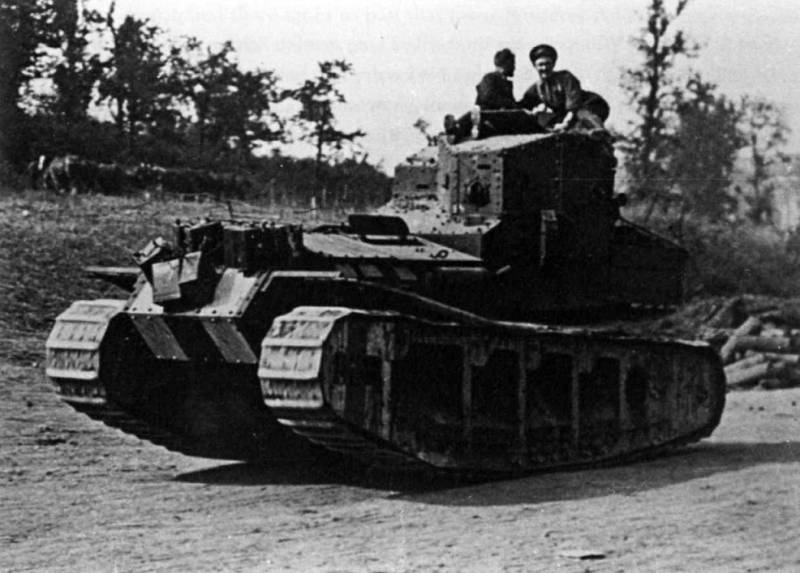
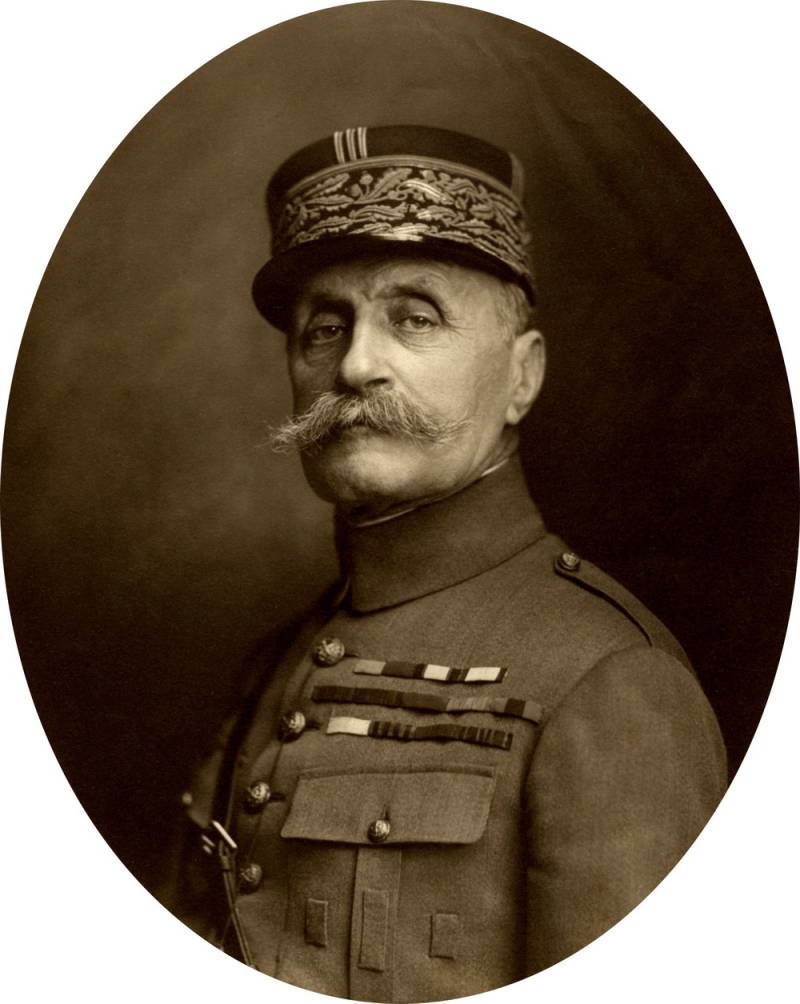
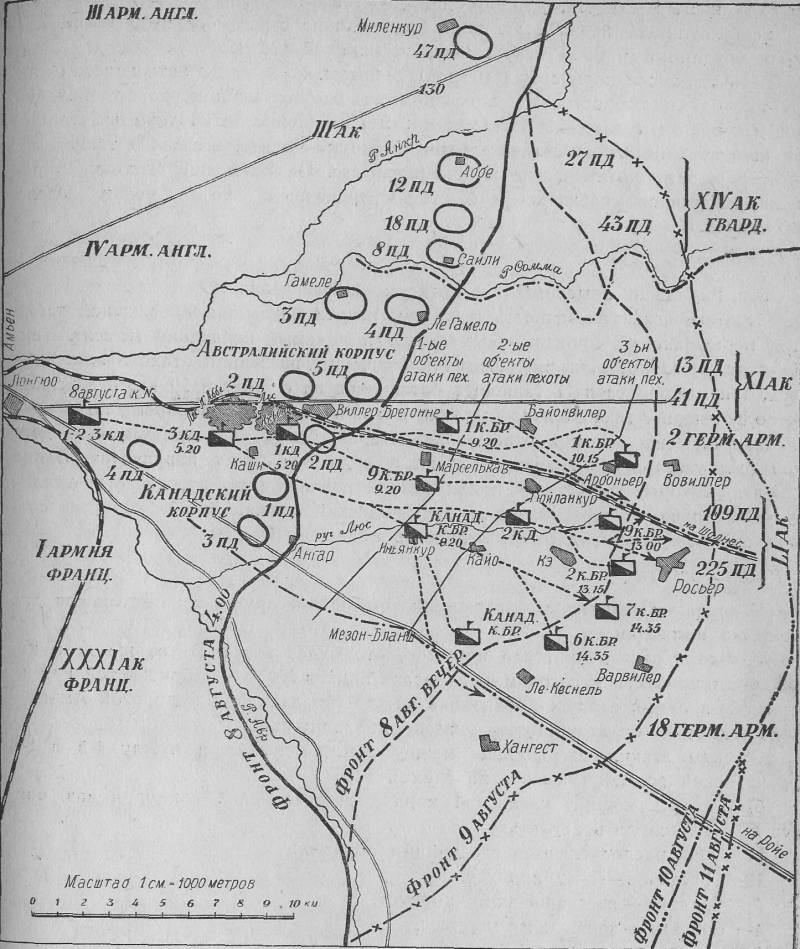
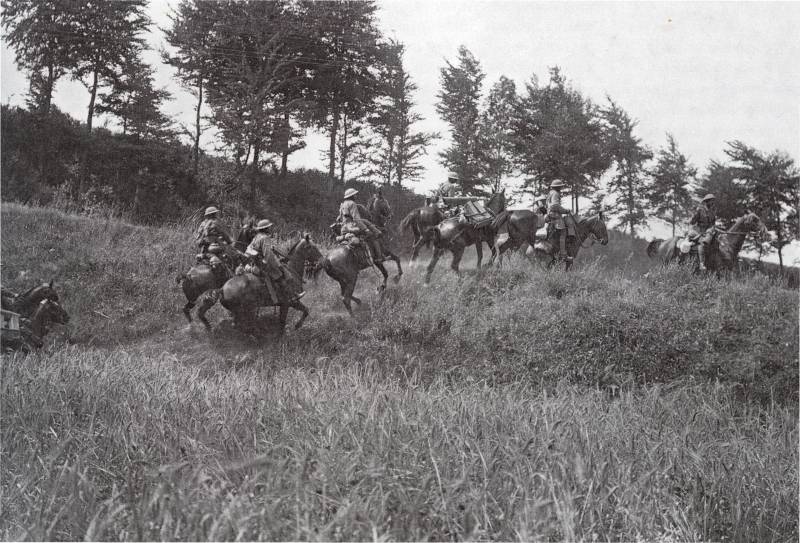
Information